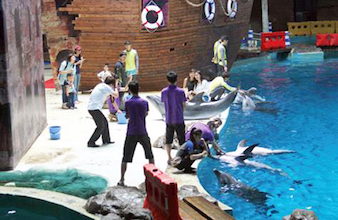China has had the world’s attention recently, with the Beijing Olympics having just concluded. Before we move on and largely shift our focus to other things, I think it might be a good time to benchmark where the nation – the world’s most populous – stands in regards to issues affecting cetacean wellbeing. As we’ll get to in a moment, I believe that there is one issue in particular that especially warrants our taking notice.
What happens in China over the next few years is of tremendous importance to large numbers of the world’s whales and dolphins. This is especially true in regards to trends in consumer preferences, especially when it comes to what counts as entertainment.
Most of the issues faced by advocates for cetaceans in China aren’t unique to that nation, and they largely reflect what most of us are dealing with in our own countries. China is not a whaling nation, but very few are now. It isn’t a member of the all-important Global Ghost Gear Initiative, though sadly only 18 national governments are at present. Chinese fishing fleets do enormous damage to the health of our oceans, not only by depleting fish stocks at a rate that is nowhere near sustainable, but also by causing the death of tens of thousands of dolphins a year as ‘bycatch’. But then we’re all complicit at this point. True, a nation like Canada can assert that it doesn’t contribute to that problem in the sense that, say, French and Spanish fishing fleets do in the Bay of Biscay. But with our very weak seafood labelling laws we absolutely do contribute to the problem.
In short, the fishing industry’s destructive impact is an urgent and enormous global problem we all share. China is admittedly a big part of that problem, but none of us can claim a good record on this. We all consume the products and demand very little accountability from those who provide them to us.
So what , then, is the distinctly Chinese issue at this point in time?
If there is one threat to cetaceans in which China really stands out, it is this – the nation is by far the world’s fastest growing market for captive whales and dolphins. A report released by World Animal Protection in 2019 estimated that it held 23% of the dolphins kept in captivity, the most of any nation (followed by Japan 16%, USA 13%, Mexico 8%, Russia 5%, and Spain 3%). What’s more alarming is the rate of increase. China has more than doubled the number of its marine theme parks in just a few years, leading to a global rise in the total numbers of whales and dolphins kept in captivity.
China has seen a dramatic rise in its general level of affluence, with many more residents now able to access an increasing variety of entertainment choices. Among these, unfortunately, are choices that require highly intelligent, social, sentient beings to be confined to shallow pools and concretes tanks, and to be compelled to perform for the viewing public. So popular have these shows become in China that the number of aquaria holding captive cetaceans has risen from 39 in 2015 to somewhere in the neighborhood of 85 today.
It gets worse.
Marine parks in China are notorious for working dolphins harder (more shows, longer hours between rest periods) than is the average case elsewhere. Living conditions in which they are held also tend to be worse. This means a higher ‘rate of attrition’ and the need to replenish more often. Shorter lives and more deaths, in other words.
We also need to consider the means employed to acquire them. In nations like the USA and most of Europe, almost all of the dolphins added to marine park ‘inventories’ for the last several years have been the result of captive breeding, as those countries have effectively ended the purchase of dolphins acquired via live captures. This is not the case in China, which is now the largest buyer – by far – of dolphins captured in Taiji’s notorious, and exceptionally cruel, drive-hunts. In 2015, well-orchestrated legal and social media campaigns (led by Action for Dolphins) resulted in a public outcry that convinced the World Association of Zoos and Aquariums (WAZA) to ban all of its members worldwide from purchasing dolphins captured in such hunts. This included large numbers of facilities in Japan itself. In China, by contrast, only one of the estimated 85 facilities is a member of WAZA, according to Ric O’Barry’s Dolphin Project.
“Now, China has taken over as Taiji’s main economic lifeline.”
I have to agree with this assessment. Live captures remain extremely lucrative for Taiji, but it’s hard to imagine that the hunts would continue to make sense economically without the huge Chinese market.
(Some hopeful news worth quickly mentioning here – Russia, long a major source of supply to China, has halted the export of its orcas, belugas, and Black Sea dolphins, and appears poised to make this ban permanent.)
So that’s where we are at this time. What then is to be done, in the face of this very large and daunting challenge? Well, the first thing you’d want to do is to get people on the ground there, and to start bringing the facts behind the marine park industry to an as-yet-largely-unaware Chinese public. Which is why I’d now like to introduce you to the China Cetacean Alliance. chinacetaceanalliance.org.
Our (almost) namesake and valued colleague has taken on an important role to kick start the process we need in place if we’re ever to address the needs of the over 700 captive dolphins already held China, as well as the thousands more that are threatened with such a fate in the years to come.
The China Cetacean Alliance is a coalition of organizations, based in a number of different countries, all dedicated to animal welfare and conservation. There’s a great deal of valuable work being done internationally by these various orgs, and we’ve written about several of them in this space at one time or another. They describe themselves as collectively “the only organization specifically targeting marine parks and working to raise awareness of the activities of the marine park industry in China. We hold the most comprehensive data on facilities and undertake regular investigations with our specialists.”
These investigations are key. We learn, for example, that in the Hangzhou facility pictured above, where visitors pay to have their photographs taken with dolphins, that the dolphins must hold a pose for many minutes during photo sessions – an experience which would be both stressful and very tedious for them.
Naomi Rose, an expert in marine mammal science at the Animal Welfare Institute (one of the coalition partners) has used online video streaming in China to raise awareness of the stress experienced by captive marine mammals, as well as their resultant health problems. It is her view that attitudes in China are slowly changing for the better. But with such a large potential customer base, the problem is enormous, and we have a long way to go. Further, she points out that China hasn’t yet had its “Blackfish moment” – an opinion whose accuracy I’d say is borne out by the huge increase in the numbers of aquaria in that country.
If we remain persistent in our efforts to raise awareness, as well as consistent in our messaging, one day China will have that moment. We’ll see the rate of construction of new captive facilities slow, and then stop. We’ll start to talk about releases back into the wild, and the construction of sanctuaries for those for whom that isn’t possible. I don’t think it will take as long in China as it’s taken in other places to date. The reason is that our tools have gotten better and more ubiquitous. Thing happen more quickly. Which is good, because the lives and liberty of so many sentient, sapient beings will be affected in the meantime.
You can help to bring about what the Alliance calls a “shared feeling of opposition against the growing captivity industry within [China]”. When you see their posts highlighting the plight of whales and dolphins in that country’s marine parks, share them, like, retweet… whatever is appropriate and at your disposal. This is about standing up to a cruel and exploitative industry, and I have every confidence that in time the people of China will agree with that.
For The Orca’s Voice,
Dani, Canadian Cetacean Alliance



Leave a Reply